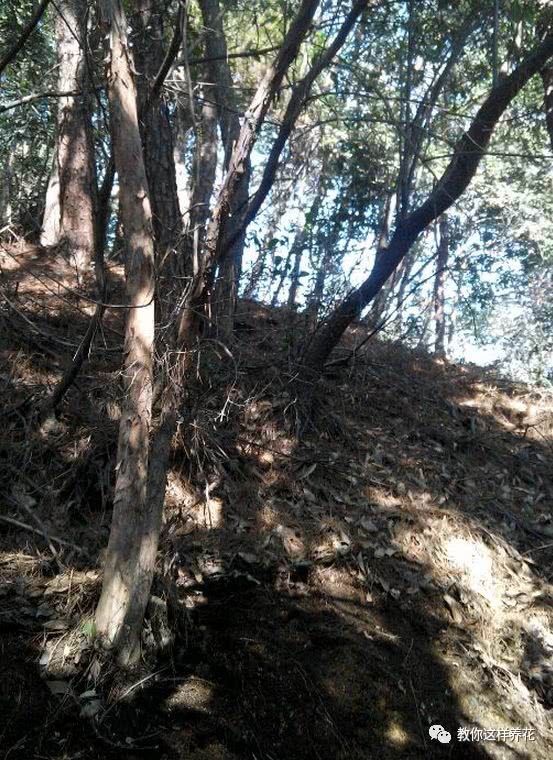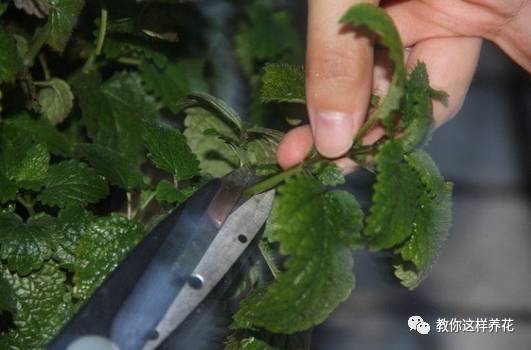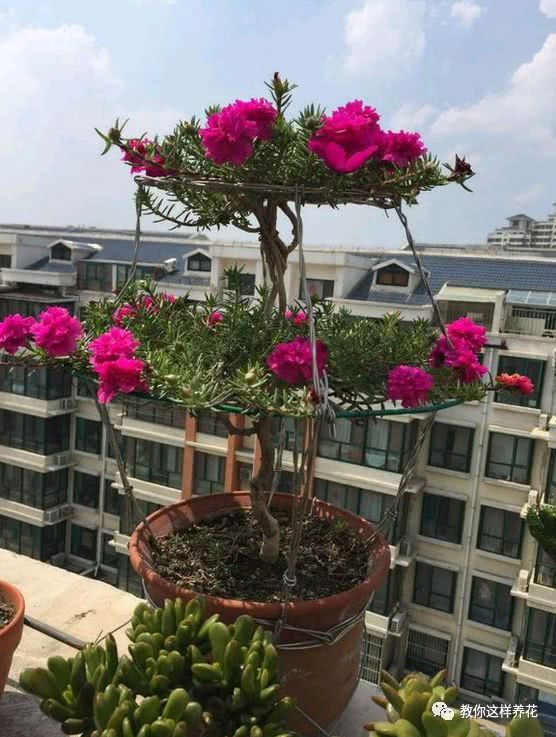These four kinds of soil are too fat to use one kind of flowers without rotten roots and grow wildly.

The most important thing for growing flowers is the flower soil, which is generally required to be loose and breathable. If it is easy to agglomerate and drain poorly, many flowers will wither after being raised for a while. So what are the common flowers in our daily life? How should I use it? Let's have a look!
"
Flower-growing soil
"
Soil with its own fertility
-rotten leaf soil-
Rotten leaf soil can be dug everywhere, whether in the mountains or in the city. Huahua tells you a little trick to find a remote grove, which is a thick layer of rotten leaf soil.
(rose Bar Tianxing work 027)
When digging, dig up a layer of floating soil on the line, green grass are as little damage as possible. Rotten leaf soil usually has worms, which should be dried for a few days before using it. Rotten leaf soil has good drainage permeability and high fertility, so it can be used as the main plant material to grow flowers by adding a small amount of particles. When using large pieces of basin bottom, more fine pieces can be put on top.
-pine needle soil-
Pine trees are easy to drop pine needles, and there is a thick layer of pine needle soil under the pine forest. Pine needle soil should remove the pine needle on the surface and dig out the matured soft brown soil inside.
Pine needle itself contains bacteriostatic substances, so it is less sick to raise flowers with pine needle soil. Pine needle soil has good drainage and air permeability, but its water retention is slightly worse.
(longevity flower bar novice longevity flower)
-Mountain soil-
There are many kinds of mountain mud, including Hongshan mud, Huangshan mud, black mountain mud and so on. Black mud has more organic matter, and red-Huangshan mud contains more minerals such as iron. Generally speaking, it is a flower soil with strong acidity. There is also part of the mountain soil, which contains partially weathered mineral stone, which is very helpful for the growth of flowers.
Montenegro mud is rich in organic matter, raising orchids, camellias, rhododendrons and other acid-loving flowers are very good, mixed with some particles, rice husk charcoal, the root system is very strong.
Red-yellow mountain mud has little organic matter, high viscosity and easy to harden. It should be improved by adding rotten leaf soil or peat soil and other media, and then used to raise acidic flowers.
-Peat-
Peat soil and peat soil are basically a kind of substance, which is produced by the accumulation of aquatic plants at the bottom of the water. There are plant residues that have not been completely decomposed in peat soil, while peat soil has a higher degree of carbonation. Peat soil is relatively better.
Peat soil has strong water retention capacity and slightly acidic, but its drainage is poor. If peat soil is used alone to raise flowers, it will be easy to harden, and some perlite, coconut bran and appropriate amount of organic fertilizer will be mixed. Domestic peat soil is basically in the northeast, so this general flower friend can not dig up, fortunately, the price is not expensive, you can buy it online.
Peat is used to germinate, and the germination rate is very high.
-Bamboo root granular soil-
People who have been growing flowers for years know that the bamboo root soil is very fat, but the bamboo roots are intertwined and the roots grow horizontally, so it is easy to break the bamboo roots and stagnate the growth of bamboo. So most bamboo farmers won't let you dig.
Flower friend Jiang Fengliao happens to be able to find bamboo root soil and use bamboo root soil to make self-made particles. This kind of bamboo root soil is submerged under the rotten bamboo leaves all the year round, and a group of troops shovel it down and squeak the oil. just by the feel of the soil that is not greasy and not dry, we know that this soil is the best for growing flowers.
In the bamboo forest, due to the effect of soil and bamboo roots, the soil is relatively dry. Once the soil is dry, there will be fewer worms and fewer bacteria. This can be regarded as one of the great advantages of bamboo root mud. No sieving, no drying, no insecticidal. Just rub with your hands and pick out the fallen leaves, and the soil will already have the conditions for processing.
Different fertilizers can be mixed in small amounts according to the different plants planted.
Stir and add water, shake the basin soil, and naturally turn into particles.
Then dry in the sun, be sure to dry thoroughly and store it in reserve. Mixing it into the basin soil, or directly using it to raise plants, is better than Chiyu soil!
(Sina blog Jiang Fengliao)
This soil is good for growing flowers, fertile, growing fast and flamboyant ears. However, generally speaking, growing flowers in a single soil is not very good, it is best to have a variety of media and properties, and make different proportions for different flowers in order to match the flower soil that flowers need. The common matching media are garden soil, coconut bran, plain sand and so on.
Mixed use of many kinds of soil
-Garden soil-
Garden soil refers to the vegetable garden soil, pastoral soil, which has been cultivated and cultivated flowers, trees and vegetables. Generally speaking, the garden soil has good fertility and strong water retention, but the soil is easy to harden and water is easy to rot.
-coconut bran-
Coconut bran is a medium for the production of coconut shell fiber, coconut bran is soft and breathable, the drainage is good, the price is cheap, but it has no fertility, so it can be mixed with other soil.
-River sand-
The drainage performance of river sand is good, the volume will not change after adding water, and the structure is stable. However, river sand has no fertility and can be added to other soils to improve soil drainage. The river sand should be put into coarse sand with larger particles, otherwise it will not play the role of drainage.
Soil allocation of common plants
-general plant soil distribution-
General plant soil allocation:
1 part of peat or rotten leaf soil, 1 part of garden soil, 1 part of granule, a small amount of organic fertilizer.
-soil for succulent plants-
Florists in the north can refer to:
5 parts of peat soil, 2 parts of coarse sand, 3 parts of particles, and a small amount of slow-release fertilizer.
Florists in the south can refer to:
3 parts of peat soil, 2 parts of coconut bran, 2 parts of coarse sand, 3 parts of particles, and a small amount of slow-release fertilizer.
There can be more peat in dry and cool places, and more particles in hot and humid places. There are more particles in the old pile and more peat in the seedling.
How many kinds of soil are there around you?
What kind of soil is ready in spring?
After reading it, let's show it to the flower friends in need.
- Prev

The cuttings of these 15 kinds of flowers are now too simple to take root in a week and become big in a second.
The cutting of "flower and plant cutting"-mint-mint is relatively simple, cut off the slightly older branches of about 10 cm, cut off the bottom leaves, and root in the water for a few days, or directly into the loose soil and put them in a cool place first.
- Next

Sunflowers can also cultivate ten thousand yuan bonsai. The old pile depends on this trick.
When it comes to sunflowers, the most impressive name is the immortal name, which is really difficult to raise and die, leaving it in the pot without using a tube, occasionally watering it and blooming the same. And cutting is also very convenient, cutting a section of branches into the soil can survive. No.
Related
- Wuhan Hospital Iron Tree Blooming Result Was Instantly Frightened by the Gardener Master
- Which variety of camellia is the most fragrant and best? Which one do you like best?
- What is the small blue coat, the breeding methods and matters needing attention of the succulent plant
- Dormancy time and maintenance management of succulent plants during dormancy
- Minas succulent how to raise, Minas succulent plant pictures
- What are the varieties of winter succulent plants
- How to raise succulent plants in twelve rolls? let's take a look at some experience of breeding twelve rolls.
- Attention should be paid to water control for succulent plants during dormant period (winter and summer)
- Watering experience of twelve rolls of succulent plants
- Techniques for fertilizing succulent plants. An article will let you know how to fertilize succulent plants.

